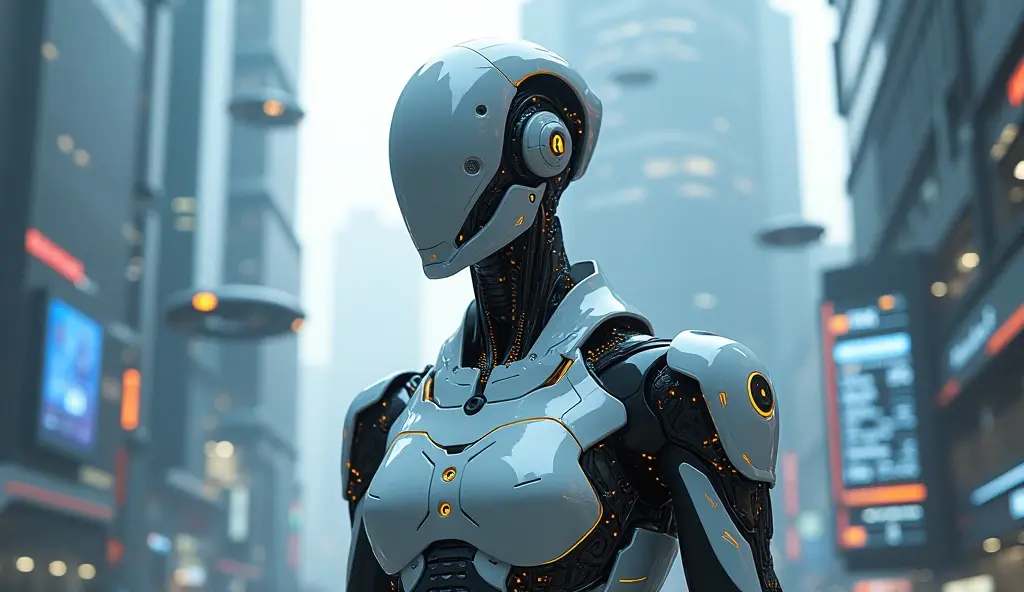AI in Python: Tutorials for Developers
Artificial Intelligence (AI) has become an integral part of modern software solutions, enabling developers to create smarter, more efficient systems. Python, with its simplicity and extensive libraries, is the go-to language for AI development. In this tutorial, we’ll guide you step-by-step to understand AI concepts and implement them in Python.
1. Getting Started with AI in Python
Prerequisites
- Basic understanding of Python programming.
- Python environment installed (e.g., Anaconda or plain Python).
- Familiarity with libraries like
numpy,pandas, andmatplotlib.
Install Required Libraries
pip install numpy pandas matplotlib scikit-learn tensorflow keras
2. Understanding AI and Its Components
AI has multiple subfields:
- Machine Learning (ML): Algorithms that learn patterns from data.
- Deep Learning (DL): Neural networks with multiple layers mimicking the human brain.
- Natural Language Processing (NLP): Handling human language.
- Computer Vision (CV): Processing and understanding images/videos.
3. Exploratory Data Analysis (EDA)
Loading Data
Use datasets like the Titanic dataset or MNIST for analysis. Here’s an example with a CSV file:
import pandas as pd
# Load dataset
data = pd.read_csv('titanic.csv')
# Preview data
print(data.head())
Cleaning Data
Handle missing values and encode categorical data.
# Fill missing values
data['Age'] = data['Age'].fillna(data['Age'].median())
# Encode categorical variables
data['Sex'] = data['Sex'].map({'male': 0, 'female': 1})
Visualizing Data
Use matplotlib or seaborn for data visualization.
import matplotlib.pyplot as plt
import seaborn as sns
# Plot age distribution
sns.histplot(data['Age'], kde=True)
plt.show()
4. Machine Learning Basics
Splitting Data
Divide data into training and testing sets.
from sklearn.model_selection import train_test_split
X = data[['Age', 'Sex']]
y = data['Survived']
X_train, X_test, y_train, y_test = train_test_split(X, y, test_size=0.2, random_state=42)
Training a Model
Train a simple Logistic Regression model.
from sklearn.linear_model import LogisticRegression
from sklearn.metrics import accuracy_score
model = LogisticRegression()
model.fit(X_train, y_train)
# Predictions
y_pred = model.predict(X_test)
print("Accuracy:", accuracy_score(y_test, y_pred))
5. Deep Learning with TensorFlow and Keras
Building a Neural Network
Train a neural network to classify images (e.g., MNIST dataset).
- Import Libraries
import tensorflow as tf
from tensorflow.keras.models import Sequential
from tensorflow.keras.layers import Dense, Flatten
- Load Data
from tensorflow.keras.datasets import mnist
(X_train, y_train), (X_test, y_test) = mnist.load_data()
X_train, X_test = X_train / 255.0, X_test / 255.0
- Define the Model
model = Sequential([
Flatten(input_shape=(28, 28)),
Dense(128, activation='relu'),
Dense(10, activation='softmax')
])
model.compile(optimizer='adam',
loss='sparse_categorical_crossentropy',
metrics=['accuracy'])
- Train the Model
model.fit(X_train, y_train, epochs=5)
- Evaluate the Model
test_loss, test_acc = model.evaluate(X_test, y_test)
print("Test Accuracy:", test_acc)
6. Natural Language Processing (NLP)
Text Classification with Scikit-learn
Classify text using bag-of-words and a Naive Bayes classifier.
- Load Text Data
from sklearn.feature_extraction.text import CountVectorizer
from sklearn.naive_bayes import MultinomialNB
text_data = ["I love Python", "Python is amazing", "I hate bugs"]
labels = [1, 1, 0]
vectorizer = CountVectorizer()
X = vectorizer.fit_transform(text_data)
- Train a Model
model = MultinomialNB()
model.fit(X, labels)
- Make Predictions
new_text = vectorizer.transform(["Python is the best"])
print(model.predict(new_text))
7. Computer Vision
Image Classification
Use OpenCV and TensorFlow to classify images.
- Load an Image
import cv2
img = cv2.imread('image.jpg', cv2.IMREAD_GRAYSCALE)
img_resized = cv2.resize(img, (28, 28)) / 255.0
- Predict Class
import numpy as np
img_reshaped = np.expand_dims(img_resized, axis=0)
prediction = model.predict(img_reshaped)
print("Predicted Class:", np.argmax(prediction))
8. Advanced Topics
Reinforcement Learning
Implement basic reinforcement learning using gym.
import gym
env = gym.make('CartPole-v1')
state = env.reset()
for _ in range(1000):
action = env.action_space.sample()
next_state, reward, done, _ = env.step(action)
if done:
state = env.reset()
Transfer Learning
Use pre-trained models like ResNet for classification.
from tensorflow.keras.applications import ResNet50
model = ResNet50(weights='imagenet')
9. Deploying AI Models
Using Flask
Deploy your model as an API.
from flask import Flask, request, jsonify
app = Flask(__name__)
@app.route('/predict', methods=['POST'])
def predict():
data = request.get_json()
prediction = model.predict([data['features']])
return jsonify({'prediction': prediction.tolist()})
app.run(port=5000)
10. Best Practices
- Optimize Models using techniques like hyperparameter tuning.
- Document Code for clarity.
- Use Version Control (e.g., Git).
- Test Models with real-world data.
This tutorial provided a foundational understanding of AI development using Python. From loading and cleaning data to training models and deploying them, these steps help you build powerful AI applications. Experiment further with different datasets and techniques to enhance your skills.
Read More How Artificial Intelligence Helps Code Tutorials

